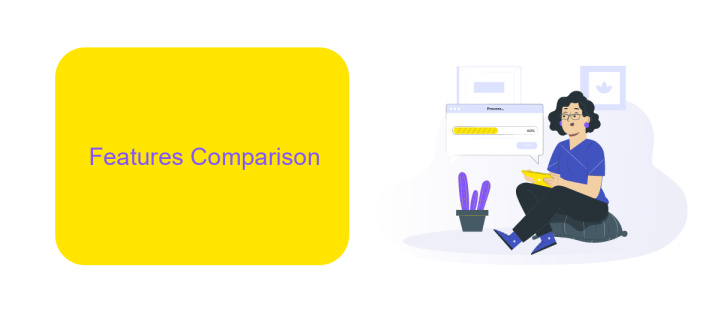Swagger Vs MuleSoft
In the rapidly evolving landscape of API management, choosing the right tool can significantly impact your development process. Swagger and MuleSoft are two prominent names in this domain, each offering unique features and capabilities. This article delves into a comparative analysis of Swagger and MuleSoft, helping you understand their strengths, weaknesses, and ideal use cases to make an informed decision.
Introduction
In today's digital landscape, integrating various software applications and services is crucial for seamless operations and enhanced productivity. Two prominent tools that facilitate these integrations are Swagger and MuleSoft. Both of these platforms offer unique features and capabilities, making them popular choices for businesses looking to streamline their workflows and improve efficiency.
- Swagger: An open-source framework that simplifies the process of designing, building, and documenting RESTful APIs.
- MuleSoft: A comprehensive integration platform that connects various applications, data, and devices through APIs, providing a unified solution for enterprise-level integrations.
Choosing between Swagger and MuleSoft depends on your specific needs and the complexity of your integration requirements. For instance, if you need a user-friendly tool for API documentation and design, Swagger might be the ideal choice. On the other hand, if you're looking for a robust platform that can handle complex integrations across multiple systems, MuleSoft could be more suitable. Additionally, services like ApiX-Drive can further simplify the integration process, offering automated workflows and seamless connectivity between different applications.
Features Comparison

Swagger and MuleSoft offer distinct features tailored to different needs in API management. Swagger primarily focuses on API design and documentation, providing a user-friendly interface that allows developers to create, visualize, and maintain APIs with ease. It supports OpenAPI Specification, which ensures consistency and interoperability among APIs. Swagger's tools, like Swagger Editor and Swagger UI, streamline the development process by enabling real-time editing and interactive API documentation.
MuleSoft, on the other hand, excels in integration capabilities, offering a comprehensive platform for connecting applications, data, and devices. Its Anypoint Platform provides a unified solution for API design, development, and management, along with robust integration tools. MuleSoft's strength lies in its ability to handle complex integrations, making it a preferred choice for enterprises requiring extensive connectivity. Services like ApiX-Drive can complement these platforms by simplifying the integration process, allowing users to automate data transfer between various applications and services seamlessly.
Use Cases and Best Practices

Swagger and MuleSoft are both powerful tools for API management, but they shine in different scenarios. Swagger is ideal for designing, building, and documenting APIs. It is especially useful for small to medium-sized projects where simplicity and ease of use are paramount. MuleSoft, on the other hand, excels in complex enterprise environments where integration across various systems and services is required.
- Use Swagger for straightforward API documentation and testing. It simplifies the process of creating interactive API documentation that can be easily shared with developers.
- Leverage MuleSoft for extensive integration needs. Its Anypoint Platform offers robust capabilities for connecting disparate systems, making it ideal for large-scale enterprise applications.
- Consider using ApiX-Drive for automating integrations between different services. It provides a user-friendly interface to set up integrations without needing extensive coding knowledge.
In summary, the choice between Swagger and MuleSoft depends on your specific needs. For simple API documentation and testing, Swagger is the go-to tool. For complex integrations and enterprise-level applications, MuleSoft offers comprehensive solutions. Additionally, ApiX-Drive can serve as a valuable tool for automating integrations, further simplifying the process.
Pricing and Licensing

When comparing Swagger and MuleSoft, pricing and licensing are crucial factors to consider. Swagger offers a range of tools, including SwaggerHub, which provides both free and paid plans. The free tier is suitable for small teams and individual developers, while the premium plans cater to larger organizations with advanced needs.
MuleSoft, on the other hand, operates on a subscription-based model with various pricing tiers based on the number of integrations and the level of support required. MuleSoft's pricing can be more complex due to its enterprise-level features and capabilities.
- SwaggerHub: Free plan available, premium plans start at /month.
- MuleSoft: Subscription-based pricing, tailored to enterprise needs.
- ApiX-Drive: Offers flexible pricing for integration solutions, starting with a free trial.
Choosing between Swagger and MuleSoft depends on your specific requirements and budget. For those looking for a cost-effective solution with robust API documentation, Swagger is a strong contender. Conversely, MuleSoft is ideal for large-scale, enterprise-grade integrations. Additionally, services like ApiX-Drive can complement these tools by simplifying the integration process, offering a versatile and affordable option for businesses of all sizes.
Conclusion
In conclusion, both Swagger and MuleSoft offer robust solutions for API management and integration, each with its unique strengths. Swagger excels in API documentation and design, making it an ideal choice for developers who prioritize clear, comprehensive documentation. Its open-source nature and ease of use further enhance its appeal for smaller projects or teams looking for a straightforward solution.
On the other hand, MuleSoft provides a more comprehensive suite of tools for enterprise-level integration needs, including API management, data integration, and analytics. Its extensive capabilities make it suitable for complex, large-scale projects that require seamless integration across various systems. For those looking to streamline their integration processes further, services like ApiX-Drive can be invaluable. ApiX-Drive simplifies the integration of multiple applications and services, ensuring smooth data flow and enhancing overall operational efficiency. Ultimately, the choice between Swagger and MuleSoft depends on the specific requirements and scale of your project.
FAQ
What is Swagger?
What is MuleSoft?
How do Swagger and MuleSoft differ in terms of API documentation?
Can Swagger be integrated with MuleSoft?
What tools are available for automating and setting up integrations between APIs?
Apix-Drive is a simple and efficient system connector that will help you automate routine tasks and optimize business processes. You can save time and money, direct these resources to more important purposes. Test ApiX-Drive and make sure that this tool will relieve your employees and after 5 minutes of settings your business will start working faster.

